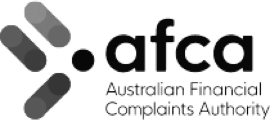By Steven Dooley – APAC Currency Strategist, Western Union
As we enter the new financial year, businesses with foreign exchange exposure might be facing a tougher-than-usual time.
With global growth slowing, and major central banks cutting – or considering cutting – interest rates, FX volatility might rise.

Why? FX markets, like most markets, try and place value on a currency by looking into the future. If the future is less certain – due to slowing growth and potential rate cuts, for example – then volatility rises as markets try to adjust to an uncertain future.
For businesses with FX exposure, volatility equals risk. A moving market means an uncertain cost or an uncertain profit in your business.
Aussie risks in focus
For local businesses, the risks are even more pronounced. As we enter the new financial year, the Australian dollar faces three big risks.
First, the Aussie might be pressured by further big moves in financial markets. The AUD is closely tied to global risk appetite. When investors are feeling positive, and global sharemarkets are climbing, the AUD tends to climb as well.
On the other hand, a big selldown in financial markets might cause the AUD to fall. We’ve already seen sharemarkets experience some big falls over the last 12 months with the global economic slowdown and increasing tension from trade wars the main reasons for the selldown. Further nervousness in sharemarkets might pressure the AUD further.
Second, the Australian dollar is often driven by the health of the Chinese economy. As our largest export market, the fate of the Australian economy is closely tied to China’s performance. With Chinese growth recently slowing, this is another risk for the AUD.
Finally, the biggest risk is further interest rate cuts from the Reserve Bank of Australia. The RBA cut rates to a historic low of 1.25% in May and the market expects another cut by October.
Budget this
The RBA’s moves to cut local interest rates have already had an impact on the Australian dollar.
The AUDUSD fell to ten-year lows earlier in the year and has recently moved back towards these levels. Clearly, the game is changing for businesses with FX exposure.
For many businesses, the move below 0.7000 in the AUDUSD has seen the market move below their internal budgeted rate. These kinds of move can create short-term cashflow problems. One way to manage these problems is to reach out to Banjo Loans for a short-term funding solution.
As we enter the new financial year, these businesses need to consider whether they have set the correct budget rate for their business.
When setting a budgeted rate, consider these questions:
Is the budgeted rate competitive? Your budgeted rate is a core component of your cost of goods and needs to allow you to win business versus your competitors.
Is it realistic? It’s all very well to have the best budgeted rate that results in a very cheap product, but if it’s not realistic, it will end with a major FX loss at the end of the financial year.
Is it achievable? A budgeted rate, while necessary, introduces risk into your business. You can manage that risk by hedging, but can you achieve that rate today? If not, the risk becomes immediate.
Worse-case rate
Once you have an effective and useful budgeted rate, by implementing an FX risk management policy and hedging your FX exposures, the budgeted rate can become a “worst-case” or “floor” rate.
The budgeted rate – for better or worse – becomes an internal risk so managing this risk is important.
This is why we say the budgeted rate needs to be achievable, because a budgeted rate that can’t be currently hedged at that rate becomes an instant risk and can potentially become a major distraction for a management team that should be focused on other topics.
With some hedging products, a “worst-case” rate is locked in, but you may still have the ability to benefit if the market moves in your favour.
From this perspective, businesses can have the best of both world: potential FX losses are avoided while the business will benefit if the market moves in their favour.
Sit down and think
Of course, the ability to manage both side of the market in this way comes at a cost. The rate you achieve to hedge in this way is typically less attractive than the rate you might achieve in the traditional spot FX market.
For many businesses, the decision about how to hedge will come down to the individual characteristics of their business. Businesses with low-margin, commodified products might have less opportunity to explore alternatives compared with other businesses.
Regardless, all businesses will find that approaching their FX risks with a more methodological and strategic focus is likely to bring benefits. For more information, speak to your accountant.


